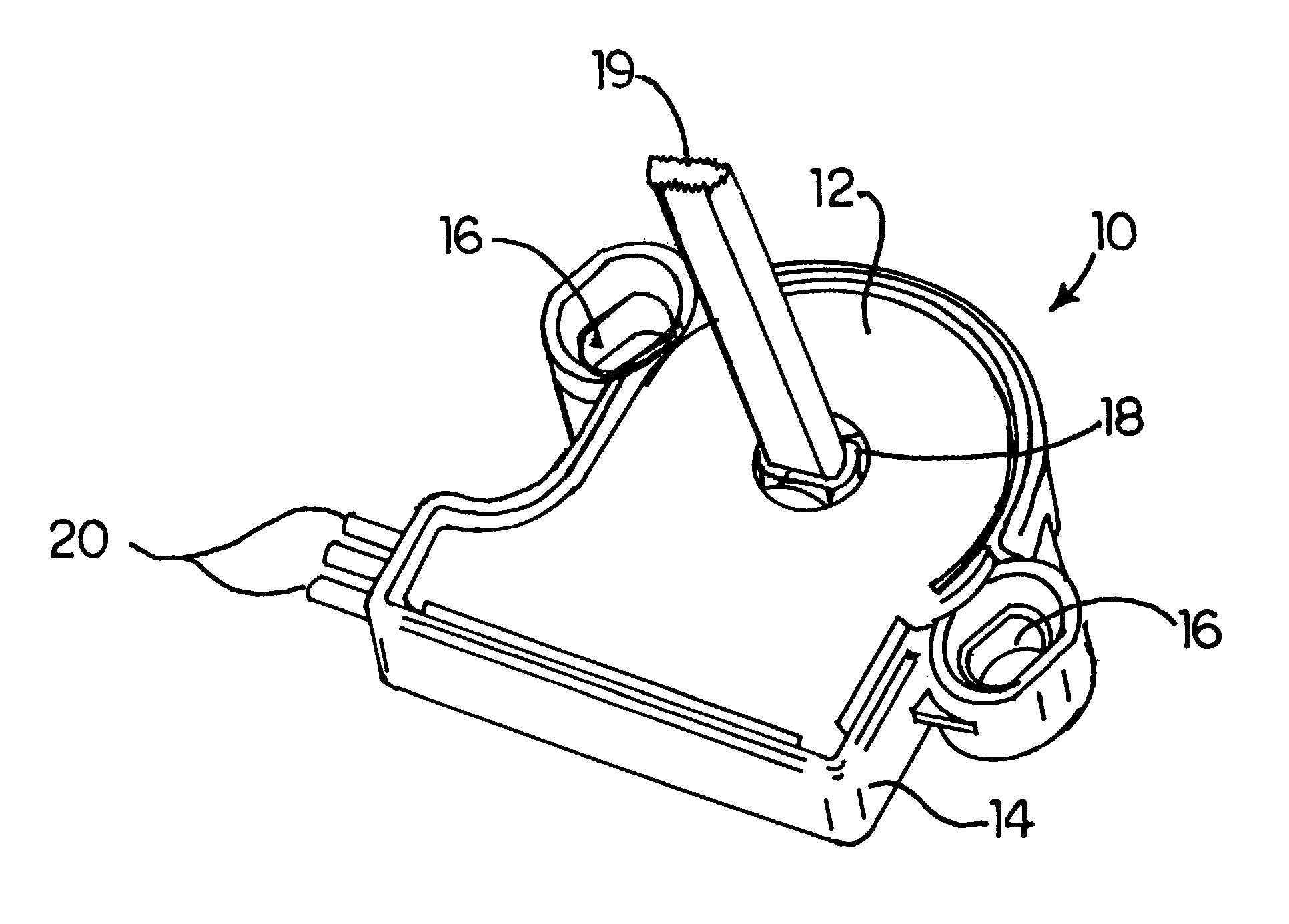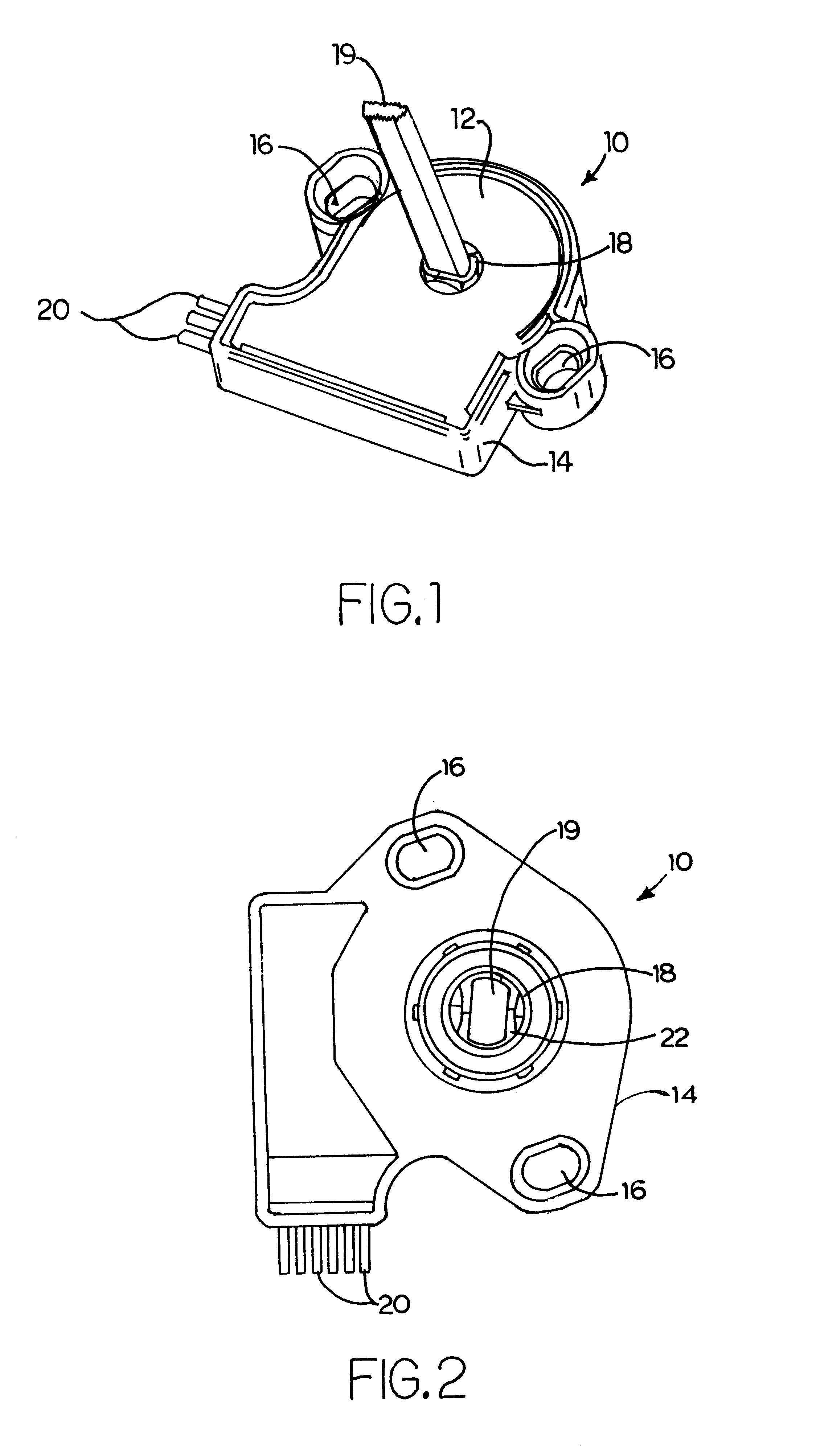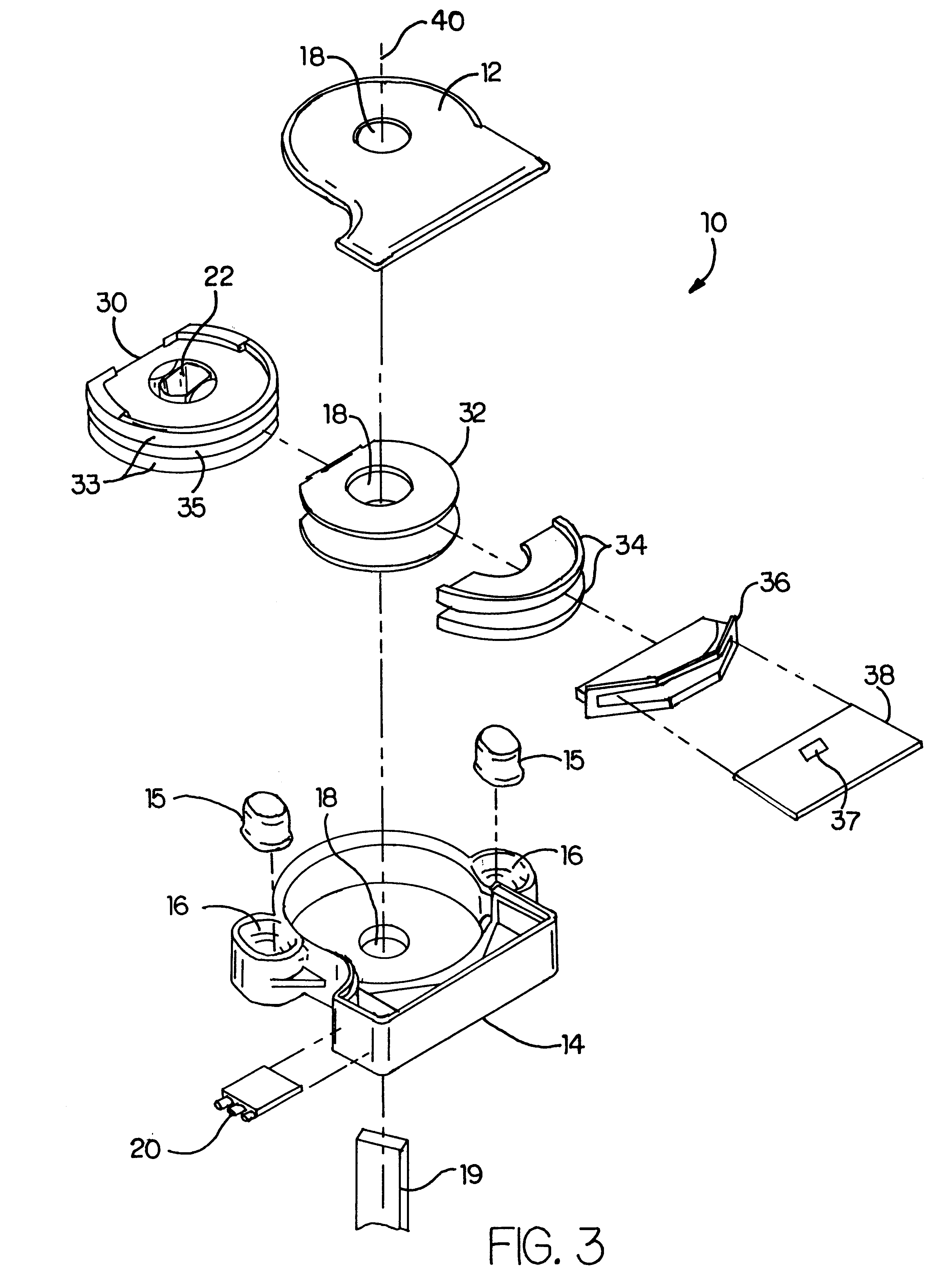Low profile non-contacting position sensor
a position sensor, low profile technology, applied in the direction of galvano-magnetic devices, instruments, galvano-magnetic hall-effect devices, etc., can solve the problems of shrinking of the engine compartment, too thick and inability to fit into some engine locations
- Summary
- Abstract
- Description
- Claims
- Application Information
AI Technical Summary
Problems solved by technology
Method used
Image
Examples
Embodiment Construction
(S)
1. Field of the Preferred Embodiment(s)
This invention generally relates to position sensing and to a position sensor which is compact, durable and precise. More specifically, the invention relates to a noncontacting low profile position sensor.
2. Description of the Related Art
Position sensing is used to allow an electrical circuit to gain information about an event or a continuously varying condition. There are a variety of known techniques for angular position sensing. For example, optical, electrical, electrostatic, and magnetic fields are all used in a sensor to measure position. There are many known sensors such as resistive contacting networks, inductively coupled ratio sensors, variable reluctance devices, capacitively coupled ratio detectors, optical detectors using the Faraday effect, photo-activated ratio detectors, and electrostatic ratio detectors.
There are many applications for sensors, and a wide variety of technologies to fill these needs. Each of these technologies...
PUM
 Login to View More
Login to View More Abstract
Description
Claims
Application Information
 Login to View More
Login to View More - Generate Ideas
- Intellectual Property
- Life Sciences
- Materials
- Tech Scout
- Unparalleled Data Quality
- Higher Quality Content
- 60% Fewer Hallucinations
Browse by: Latest US Patents, China's latest patents, Technical Efficacy Thesaurus, Application Domain, Technology Topic, Popular Technical Reports.
© 2025 PatSnap. All rights reserved.Legal|Privacy policy|Modern Slavery Act Transparency Statement|Sitemap|About US| Contact US: help@patsnap.com



